- Register
- Log in to Tune-In
- Wishlist (0)
-
Shopping cart
(0)
You have no items in your shopping cart.
Beatles News

A Liverpool Beatles author claims John Lennon hid the true meaning of the song Strawberry Fields Forever because he didn’t want it to reveal too much about his troubled childhood.
Francis Kenny has revised his critically-acclaimed 2014 book The Making of John Lennon to include around an extra 6,000 words, much of which focuses on the origins of the world famous song.
In Understanding John Lennon, he reveals research which points to the lyrics being written not about the Woolton orphanage but about a reform school for boys.
Lennon, says Francis, could see Gladstone Hall from his bedroom window in Mendips, and would have walked past it hundreds of times on his way to and from Quarry Bank school.
Source: theguideliverpool.com
details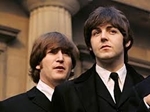
Paul McCartney has spoken in a new interview of his joy at reuniting with The Beatles bandmate and songwriting partner John Lennon.
Talking with Lennon's son Sean, he says that it would have been a ″heartache″ if they hadn't been able to meet up again after the band had been torn apart due to what McCartney calls ″arguing ... business differences.″
Lennon died after being shot outside his apartment on Dec.8, 1980, at the age of 40 — and the landmark of what would have been his 80th birthday is being celebrated in the interview that airs on BBC Radio 2 this weekend.
″I always say to people, one of the great things for me was that after all The Beatles rubbish and all the arguing and the business, you know, business differences really .. that even after all of that, I'm so happy that I got it back together with your dad,″ McCartney, 78, says. ″It really, really would have been a heartache to me if we hadn't have reunited. It was so lovely to me that we did and it really gives me strength to know that."
Source: Simon Perry/yahoo.com

Peter Jackson's The Beatles documentary has been given a new release date for Australian cinemas.
Originally scheduled to hit US cinemas on 4 September, The Beatles: Get Back's Australian release will now move forward a week to 26 August, 2021.
The Beatles: Get Back, to be released by Walt Disney Studios, looks at the making of the iconic band's final album Let It Be and features their last ever concert on London's Savile Row rooftop.
“Working on this project has been a joyous discovery. I’ve been privileged to be a fly on the wall while the greatest band of all time works, plays and creates masterpieces," Jackson said.
"I’m thrilled that Disney have stepped up as our distributor. There’s no one better to have our movie seen by the greatest number of people.”
Source: themusic.com.au
details
Paul McCartney appears as one of the interviewees in a new BBC radio documentary marking what would have been John Lennon‘s 80th birthday.
The documentary, John Lennon at 80, is broadcast from 9-10pm on Saturday 3 and Sunday 4 October on BBC Radio 2 and BBC Sounds, and is presented by Lennon’s son Sean Ono Lennon.
McCartney was asked whether he and Lennon wrote “any throwaway songs that were sort of bad? Or was this kind of like, you just struck gold from the beginning?”
“There were a few songs that weren’t very good,” McCartney said. “There were a few that were clearly [by] young songwriters who don’t quite know how to do it. There was one called ‘Just Fun’.”
Elsewhere, McCartney revealed that even after The Beatles’ split, he continued to be influenced by Lennon.
Source: topi.radio
details
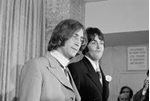
Sir Paul McCartney has admitted how grateful his is that he had the chance to reconnect with Beatles bandmate John Lennon before his death.
The relationship became strained between the pair after Lennon quit the band, leading to its dissolution after the release of their final album Let It Be in 1970.
Lennon was murdered by obsessed fan Mark Chapman outside his New York apartment on 8 December 1980, aged 40.
McCartney, 78, has now revealed in conversation with Lennon’s son Sean Ono Lennon, 44, for new BBC Radio 2 documentary John Lennon At 80: “I always say to people, one of the great things for me was that after all The Beatles rubbish and all the arguing and the business, you know, business differences really… that even after all of that, I'm so happy that I got it back together with your dad.
Source: yahoo.com
details
Abbey Road (1969) has always enjoyed a shining reputation. Right after its release, the final studio album by The Beatles received one breathless review after another and spent 11 weeks at No. 1 on the Billboard charts. It’s hard to have more critical and commercial success.
But as the decades passed, you saw Beatles fans and cultural critics treating Sgt. Pepper’s Lonely Hearts Club Band (1967) with even greater reverence. In 2003, when Rolling Stone compiled its “500 Greatest Albums” list, Sgt. Pepper claimed the top spot.
That hardly came as a surprise. After all, the record has long represented the turning point in pop music, even though many (including John Lennon) preferred other Beatles albums. However, the tide may have finally turned in Abbey Road’s favor.
While every other Beatles record exited the top 10 in the 2020 Rolling Stone “Greatest Albums” poll, Abbey Road moved up among the elite of music history. In the last few years, the record’s reputation has actually grown.
Source: cheatsheet.com

A totally unauthorised and 100 % unofficial tribute to John Lennon celebrating (believe it or not) his 80th birthday is to take place at London’s Stash Gallery. Curator Harry Pye has selected 80 artists (some very well known) and asked them to make a work to mark the life and career of this great artist and cultural legend.
I still turn to John Lennon when I need cheering up or feel in need of inspiration – Harry Pye Curator
“COVID 19 won’t stop our show. We’ve accepted we can’t have one big opening party but we can have 4 small-ish ones on each of the first 4 Fridays in October. The venue we’ve picked is located near Aldgate East tube and is part of the club Vout-O-Reene’s. John Lennon’s Not Dead will feature; drawings, paintings, photography, and collage. There will also be some specially made music and animation and some surprise performances.
Source: artlyst.com
details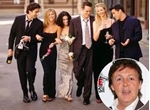
It has been revealed that Paul McCartney was close to being cast in hit US sitcom Friends.
The former Beatle, who played two shows at London’s O2 Arena over the weekend, was headhunted for the role of Ross Geller’s father-in-law back in 1998. Speaking to Huffington Post recently, the show’s casting director Leslie Litt confirmed that the creators wanted McCartney for Season Four’s two-part finale, which saw Geller marrying British love interest Emily Waltham (played by Helen Baxendale) in London. Emily’s father was eventually portrayed by Scottish-born actor Tom Conti.
“I went through his manager and gave him all the details,” Litt said. “One day, someone in the office brought me a faxed letter written to me by Paul himself!” Litt continued to tell Huffington Post: “He thanked me for my interest and said how flattered he was, but it was a very busy time for him.”
Source: Luke Morgan Britton/nme.com
details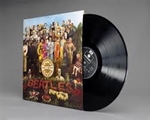
The Beatles’ Sgt. Pepper’s Lonely Hearts Club Band is often seen as a peak for the Fab Four, if not for rock music in general. John Lennon certainly had some warm feelings toward the album. However, he also felt it was inferior to one of his solo albums.
The album John Lennon called ‘Sergeant Lennon’
In Jann S. Wenner’s book Lennon Remembers, Wenner remarked how John had warm feelings about Sgt Pepper’s. For decades, Sgt. Pepper’s was widely considered The Beatles’ best work and John described the album as a “peak.” John noted how, when crafting that album, he and Paul McCartney were truly collaborating. Though he liked the songs he wrote for the White Album better, John felt Sgt. Pepper’s was ultimately superior. Then, Yoko Ono chimed in to give her opinion on Sgt. Pepper’s.
Source: cheatsheet.com
details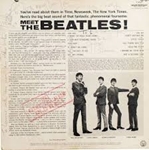
All four members of the Beatles signed this promotional copy of “Meet the Beatles” for George Harrison’s sister, while traveling by train to the band’s first U.S. concert, on Feb. 11, 1964. (Courtesy RR Auction)
While the most casual music fan knows The Beatles first live appearance in the United States was Feb. 9, 1964, on the Ed Sullivan show, some aren’t aware their first U.S. concert was two days later at the Washington Coliseum.
Now, a piece of Beatles memorabilia, being hailed as the “holy grail” of collectibles is up for auction: A “Meet the Beatles” promotional album, signed by all four band members for guitarist George Harrison’s older sister, Louise, as they traveled by train from New York City to D.C. on Feb. 11, for that evening’s show in Northeast D.C.
“They couldn’t fly because there was so much snow in Washington — eight inches — so they had to take a train,” said Bobby Livingston, executive vice president of RR Auction, which is conducting an online auction of the album.
Source: wtop.com

The Beatles had two main songwriting brains behind it: John Lennon and Sir Paul McCartney. George Harrison and Sir Ringo Starr also contributed music to the group, but the Lennon-McCartney partnership was behind some of the biggest hits from the band. It is said the band’s songwriters often wrote full songs before presenting it to the band - so which songs did John Lennon write?
John Lennon was a fantastic songwriter, as was his Beatles companion Sir Paul McCartney.
Lennon and Sir Paul met at a local church fete in 1957, where Lennon was performing with a skiffle group called the Quarrymen.
After Macca impressed Lennon with his guitar stylings, he was invited to join the Quarrymen, and soon they brought along their friends to listen to their new song performances, inviting mates such as Nigel Walley and future Beatle George Harrison.
Source: Jenny Desborough/express.co.uk
details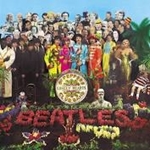
If you’re shut out by the paywall, know that things are happening behind the digital façade of Rolling Stone. For starters, the outlet released its new “500 Greatest Albums” list on Sept. 22, 2020. While it still includes a Bob Marley greatest-hits album, fans of The Beatles and other classic acts might notice the biggest changes.
That’s one way to look at the latest version of the mammoth undertaking Rolling Stone first attempted in 2003. The headline could also be something like “Rolling Stone Discovers Rap.” After only one hip-hop artist laid claim to a top-50 record in ’03, nine albums made the inner circle in ’20.
Undoubtedly, the choices of the 300 musicians, critics, producers, and industry folks who voted in the poll will ruffle the feathers of many Rolling Stone readers. (That Kanye album is better than Led Zeppelin IV? Station to Station comes in ahead of Paid in Full? OK!)
Source: cheatsheet.com
details
Paul McCartney will revisit the first song he wrote with John Lennon on a radio show to mark the late Beatle’s 80th birthday. Titled John Lennon at 80, the special will air in two parts on BBC Radio 2 and BBC Sounds on Oct. 3 and 4. The anniversary itself is on Oct. 9.
Sean Ono Lennon interviewed McCartney, Elton John and half-brother Julian Lennon for the broadcast. During his interview, McCartney took a guitar and began playing “Just Fun,” which was created soon after he and Lennon met in 1957. The song includes the lyrics “They say that our love is just fun, the day that our friendship begun.”
“There were a few songs that weren’t very good,” he said (via Music-News.com). “You know, clearly young songwriters who don’t know how to do it. Eventually we started to write slightly better songs and then enjoyed the process of learning together so much that it really took off.”
McCartney also recalled his first impressions of Lennon. “I look back on it now like a fan, how lucky was I to meet this strange Teddy boy off the bus, who played music like I did," he said. "We get together and, boy, we complemented each other!"
Source: ul details
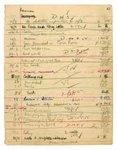
A pair of John Lennon‘s glasses and a detention sheet from when the late Beatle was in school have gone up for auction.
The auction marks 50 years since the legendary band broke up. The items trace the rise of The Beatles from mischievous lads from Liverpool to international superstars.
Lennon’s famous round Windsor glasses, a gift to his housekeeper, which are thought to predate his first public outing of the eyewear, are expected to fetch anywhere between £30,000 – £40,000.
His detention sheet, from Quarry Bank Grammar School in the 1950s, lists Lennon’s 22 detentions in under eight weeks.
Comments from teachers in the book criticise Lennon’s “complete idleness and “continuous silly behaviour in class.”
The report card is estimated to be worth between £3,000 – £5,000.
Source: Will Lavin/nme.com
details
Sean Lennon is helping celebrate what would have been his father John Lennon's 80th birthday. The younger Lennon will interview his brother Julian Lennon, Paul McCartney and Elton John in a two-part documentary, BBC Radio 2 has announced.
"John Lennon would have turned 80 years old on Friday 9 October," a press release about the event reads. "Hosted by his youngest son Sean in his first-ever radio show about his father, this is a celebratory, musical, family portrait of the legendary musician. It sheds fresh light on John's remarkable life in music -- one which created some of the most important musical milestones of the 20th Century -- and also delves deep into his incredible back catalogue."
The documentary is scheduled to be broadcast over two days in October.
Source: CNN Entertainment
details